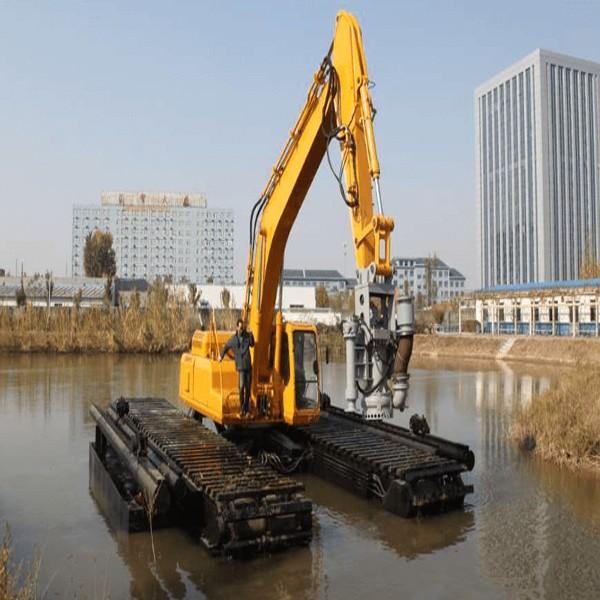Amphibious Excavator: A Flexible Solution for Earthmoving Challenges Introducing the Versatile Machine

Introduction to Amphibious Excavator
Amphibious diggers are a specialized type of heavy construction equipment that is capable of operating both on land and in water. They are designed with features that allow them to transition between terrestrial and aquatic environments with ease.
Key Features of Amphibious Excavator
Amphibious Excavator diggers have treads or tracks instead of wheels for mobility both on land and in shallow water. The tracks are sealed and protected to prevent water from seeping in. They have watertight compartments that allow them to float and move in marine environments. The engines, hydraulics and other components are protected to withstand immersion in water. They also come equipped with propellers or waterjets that provide propulsion when operating in lakes, rivers, canals and other water bodies.
Applications of Amphibious diggers
Some common applications where amphibious diggers are used include:
- Wetland and coastal protection projects: They are employed for dredging, land reclamation and building levees, seawalls, dykes and similar structures near water bodies.
- Marine construction: Activities like building harbors, marinas, bridges and offshore structures make use of their dual functionality.
- Flood control and management: After floods, they are utilized for clearing debris and rebuilding embankments. Their amphibious ability allows working in inundated areas.
- Pond and lake development: Construction of new water bodies or restoration of existing ones requires removing silt, creating banks etc. which amphibious diggers handle efficiently.
- Pipeline and cable laying: Laying pipelines on river or sea beds and installing underwater cables is simpler with their aquatic operations capability.
- Mine water management: In mining sites located near water or with subsurface water, these machines help dewatering and drainage of mines.
Operational Modes of Amphibious diggers
Amphibious diggers have different modes suited for land and water work:
- Land mode: With tracks actively gripping the ground, it functions like a regular excavator on roads and construction sites.
- Transition mode: A partly submerged state where it is negative buoyant but the tracks still touch the bottom for support and traction.
- Aquatic (swim) mode: Fully immersed and using propulsion from waterjets or propellers to freely move and carry out dredging/digging tasks completely submerged or at the water-land interface.
Get more insights on Amphibious Excavator
- Art
- Causes
- Crafts
- Dance
- Drinks
- Film
- Fitness
- Food
- Games
- Gardening
- Health
- Home
- Literature
- Music
- Networking
- Other
- Party
- Religion
- Shopping
- Sports
- Theater
- Wellness
- IT, Cloud, Software and Technology


